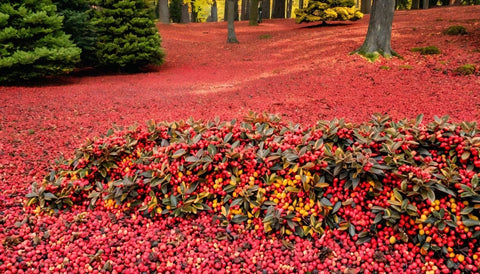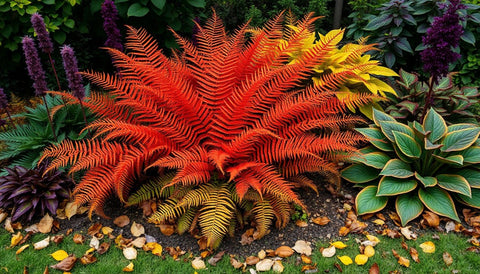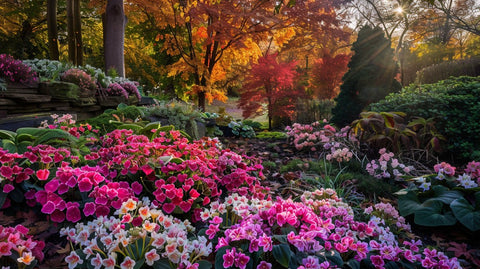Introduction
As the leaves begin to turn and the air gets that crisp, refreshing feeling, there’s no denying that autumn holds a special kind of beauty. The vibrant colors of fall aren’t just about the trees; they can extend to your entire garden when you choose the right plants. One standout option is the Cotoneaster shrub, known for its colorful foliage and berries that bring your landscape to life during these cooler months. In this post, we’re diving into the world of Cotoneaster and how it can transform your space into a fall wonderland.
What is Cotoneaster?
Cotoneaster is a versatile genus of flowering shrubs belonging to the Rosaceae family. With over 50 species, you’ve got plenty of options. Popular varieties like Cotoneaster horizontalis, known as the spreading cotoneaster, feature charming, low-growing habits, while Cotoneaster dammeri, or bearberry, offers a more creeping form. Whether you’re looking for ground cover or an accent plant to catch the eye, Cotoneaster fits the bill.

Seasonal Changes and Fall Color
One of the most alluring aspects of Cotoneaster shrubs is their ability to enhance your garden during autumn. As temperatures drop, you’ll notice the leaves shifting into vibrant shades of reds, oranges, and yellows. But the show isn’t merely about foliage—Cotoneaster shrubs also produce stunning berries, typically in bright reds or oranges, that attract wildlife and add a pop of color against the backdrop of the changing leaves. This duality of color is like adding a dash of spice to your favorite dish—it just brings everything together!

Benefits of Planting Cotoneaster
When it comes to low-maintenance gardening, Cotoneaster is a rock star. These shrubs are incredibly hardy, able to thrive in various climates, which makes them perfect for just about any garden. Plus, they require minimal upkeep—just the occasional pruning to maintain shape and health. You’ll also love how Cotoneaster attracts pollinators and birds with its berries, promoting a rich ecosystem right in your backyard. Whether you need a simple hedge, ground cover, or an accent plant, Cotoneaster checks all the boxes!

How to Plant and Care for Cotoneaster
Ready to add some Cotoneaster flair to your garden? The best time to plant is during the fall or early spring. Make sure you pick a spot with well-draining soil because these shrubs don’t like to sit in soggy conditions. A sunny location is ideal, although many varieties tolerate partial shade. Water newly planted Cotoneaster regularly for the first few months, but remember—these shrubs are drought-tolerant once established. Pruning should be done in late winter or early spring to encourage healthy growth and vibrant fall colors.

Designing with Cotoneaster in Mind
Designing your garden with Cotoneaster can result in stunning fall-themed displays. Consider planting them alongside other fall-flowering plants like Asters or Goldenrod for a riot of colors. Lay out your garden to create layered effects, with taller shrubs or perennials at the back and Cotoneaster as the perfect foreground; it’ll create depth and visual interest. Trust me, your neighbors will be envious!

Common Pests and Diseases
Like any plant, Cotoneaster isn’t immune to pests and diseases. Keep an eye out for aphids, spider mites, and root rot, especially if drainage isn’t optimal. Regular inspections can help catch any issues early. If you find pests, a gentle spray of insecticidal soap can often do the trick. With proper care and attention, you’ll have thriving Cotoneaster shrubs that brighten your fall landscape!

Conclusion
In a nutshell, Cotoneaster shrubs are a fantastic way to add rich color to your garden during fall, making them a must-have for any landscape enthusiast. Their beauty, hardiness, and ease of care make them an excellent addition to your plant repertoire. So why not consider planting Cotoneaster this season and see how they light up your garden with autumn's radiance? We’d love to hear your experiences or see photos of your Cotoneaster in all its fall glory!
Call to Action
If you found this post helpful, why not share it with friends on social media? Got questions or awesome Cotoneaster stories? Drop a comment below! And if you’re ready to get your hands dirty, check out your local nursery or garden center for Cotoneaster plants—your autumn garden will thank you!






























Comments (0)
There are no comments for this article. Be the first one to leave a message!